Summary
App user retention is one of the biggest challenges for brands, with most users dropping off after their first session. Gamification has proven to dramatically reverse this trend by creating engaging, reward-driven experiences that keep users coming back. In this article, we explore four powerful case studies—Shopee, Supertails, Foxtales, and Temu—that show how gamified strategies can transform engagement, conversions, and loyalty.
Table of Contents
The Retention Problem in Mobile Apps
Case Study 1: Shopee – 75% Retention Lift with In-App Games
Case Study 2: Supertails – 150% Conversion Surge
Case Study 3: Foxtales – Doubling Click-Through Rates
Case Study 4: Temu – Gamified Shopping Engagement
Key Takeaways for Brands
FAQ / People Also Ask
The Retention Problem in Mobile Apps
Most apps suffer from a high churn rate, with research suggesting that over 70% of users stop engaging after the first week of download. This creates a significant financial drain as companies spend heavily on user acquisition but often fail to convert them into long-term loyal customers. The competition is fierce, and without consistent engagement, brands lose both revenue and mindshare. Traditional push notifications and loyalty programs are no longer enough—users crave experiences that are fun, rewarding, and interactive. This is where gamification becomes a game-changer, turning casual visitors into active participants. Platforms like Playzo already help brands solve this exact challenge by offering plug-and-play games designed to keep users coming back.
Case Study 1: Shopee – 75% Retention Lift with In-App Games
Shopee, the leading e-commerce marketplace in Asia, tackled its retention problem by introducing engaging in-app mini-games such as Shopee Farm and Shopee Candy. These games are housed under its “Shopee Prizes” section where users can earn Shopee Coins and vouchers to spend on the platform. By rewarding daily play with tangible benefits, Shopee successfully encouraged repeat sessions, resulting in a remarkable 75% increase in retention rates. These games not only extended engagement time but also created a sense of fun and habit, positioning Shopee as more than just a shopping app—it became an entertainment destination too.
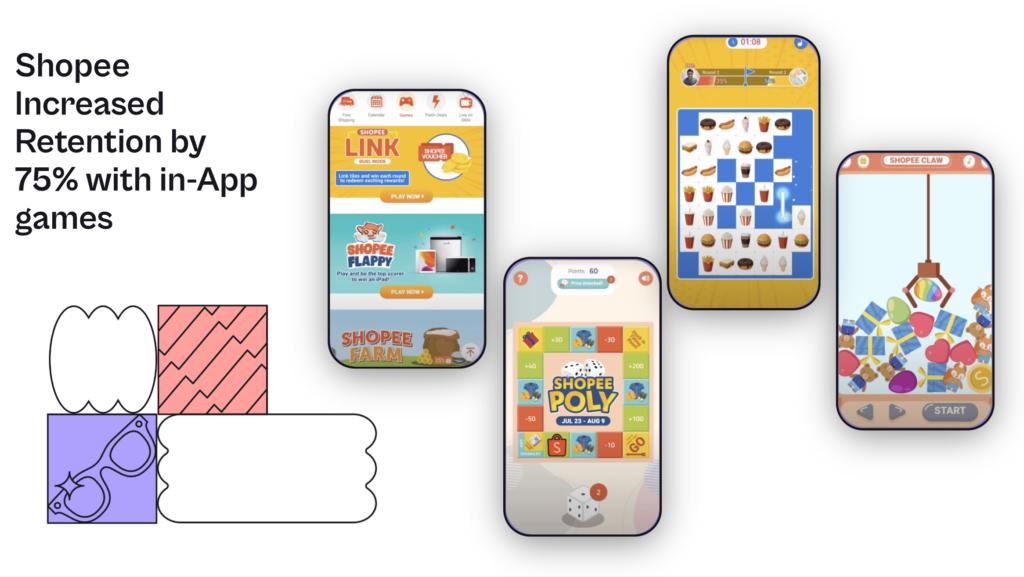
Case Study 2: Supertails – 150% Conversion Surge
Supertails, a fast-growing pet care brand in India, leveraged our gamification tool Playzo to enhance its shopping app experience. By integrating mini-games that rewarded users with discounts and product bundles, it observed a staggering 150% increase in conversion rates. Average engagement time climbed past 4 minutes per session, showcasing how playful interactions can significantly extend time spent inside an app. For a brand driven by repeat purchases, this gamified approach strengthened the bond with pet parents, making the app experience not only transactional but also entertaining and emotionally rewarding.
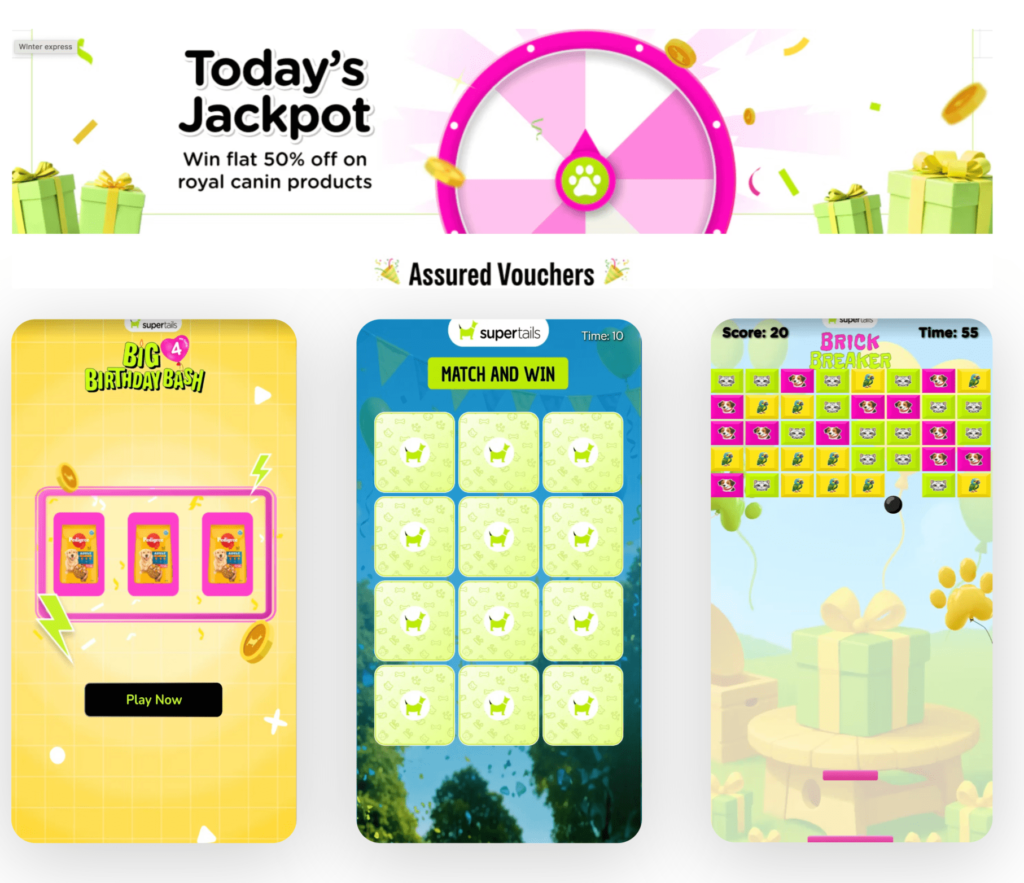
Case Study 3: Foxtales – Doubling Click-Through Rates
Foxtales, a leading skincare brand, discovered that adding gamified experiences created through Playzo to its app notifications made a significant difference in user engagement. Push notifications that invited customers to play mini-games saw almost double the click-through rate compared to standard discount alerts. Even better, users who participated in the games and won rewards showed 23% higher conversions than those who received rewards without engaging. This proved an important lesson: earning rewards through interactive play not only drives excitement but increases their perceived value. Gamification, therefore, outperformed traditional incentives by delivering both entertainment and results.
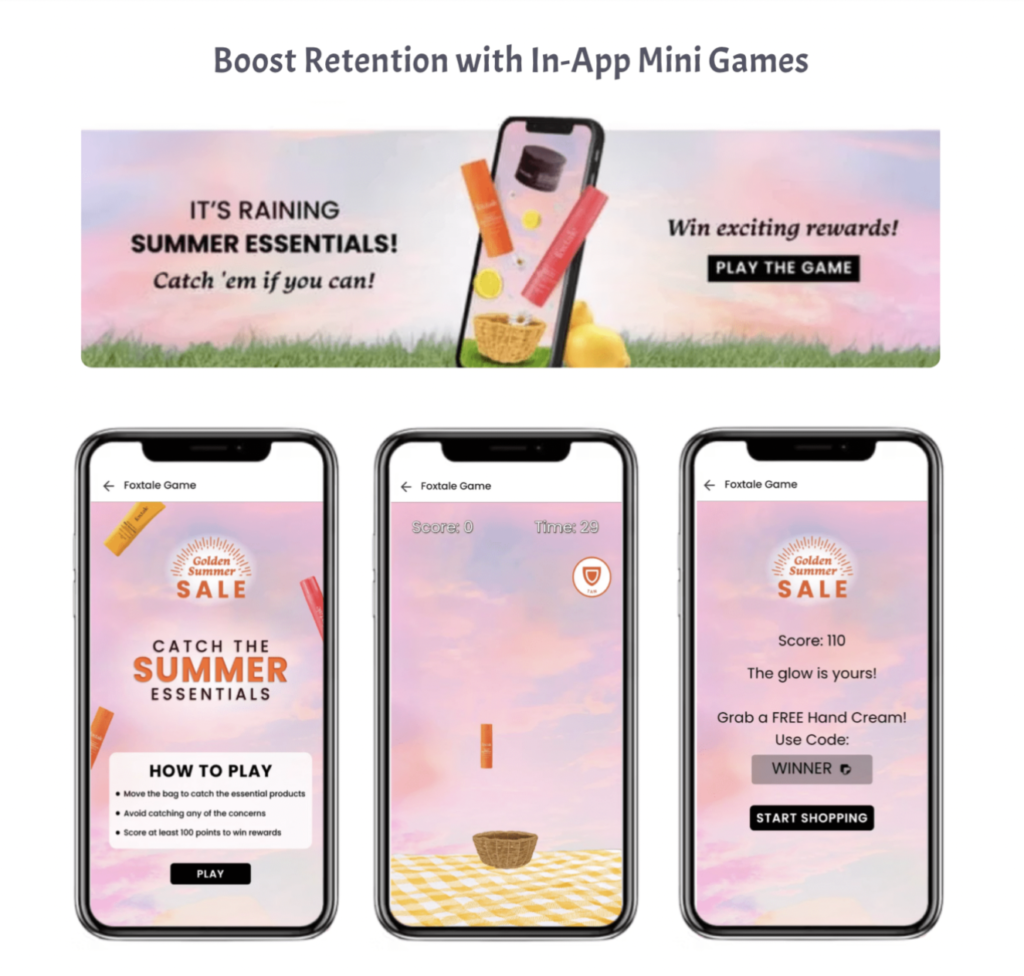
Case Study 4: Temu – Gamified Shopping Engagement
Temu, another major shopping app, is known for its viral gamified features like Fishland and Cash Tree. These games invite users to nurture virtual pets or grow digital trees while earning shopping credits and free items. This blend of entertainment and rewards has led to longer session times and higher engagement across its massive user base. Internet reports suggest that these mechanics helped Temu rapidly gain traction globally, driving repeat app opens and encouraging viral sharing among friends. By gamifying shopping, Temu successfully turned browsing into an addictive, rewarding experience that overlaps with social interaction.
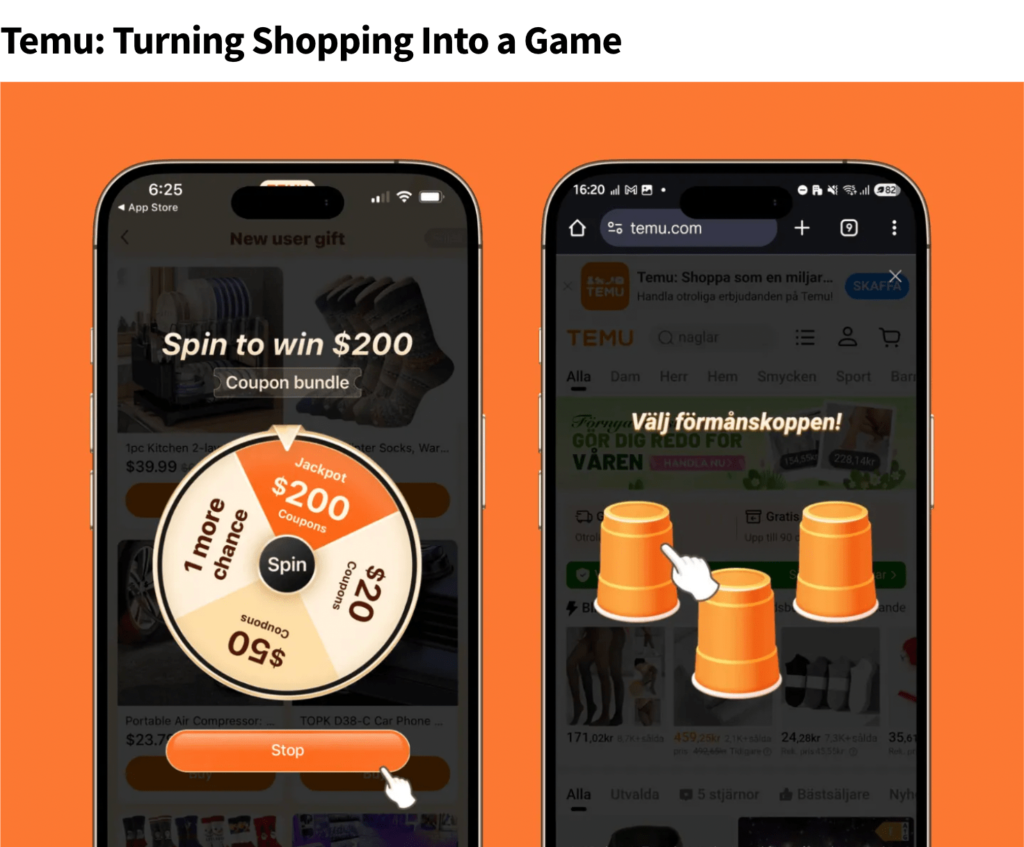
Key Takeaways for Brands
These four case studies illustrate how in-app gamification is more than a gimmick—it’s a proven strategy to fuel retention, engagement, and sales. Whether you’re an e-commerce giant like Shopee and Temu, or a niche brand like Supertails and Foxtales, gamified experiences can transform how users interact with your app. By rewarding time spent, creating habit loops, and offering socially shareable experiences, gamification can significantly improve long-term retention. Solutions like Playzo make this even easier by enabling brands to deploy ready-made interactive games such as Match 3, Scratch Cards, and Wordle—without writing a single line of code.
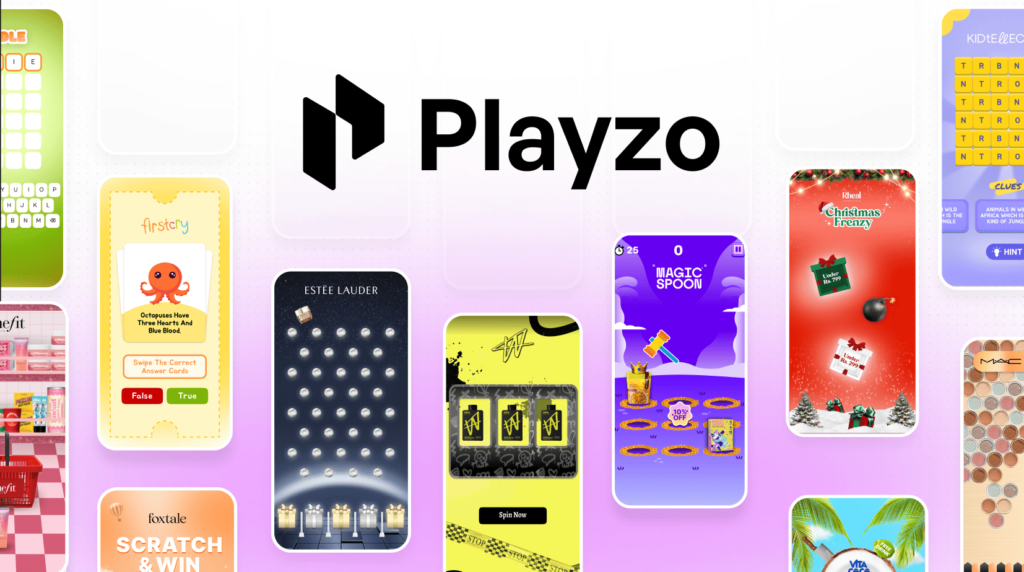
FAQ / People Also Ask
Why is app retention such a big challenge for brands?
App marketers face enormous churn rates, with most users leaving within days. The cost of acquisition is high, making it crucial to invest in retention strategies like gamification that keep users engaged.
How does gamification improve app engagement?
Gamification adds fun, interactivity, and rewards into the app experience. These elements strengthen habit loops, encourage daily logins, and improve the likelihood of repeat purchases.
Can small brands benefit from gamification too?
Absolutely. Brands like Supertails and Foxtales prove gamification isn’t just for giants like Shopee. Even smaller businesses can see dramatic boosts in engagement and conversions by adding mini-games and interactive campaigns.
How can I add gamification to my app without coding?
Platforms like Playzo make gamification plug-and-play by offering ready-made, fully customizable game templates. You can launch interactive experiences quickly and optimize them with analytics—all without technical skills.